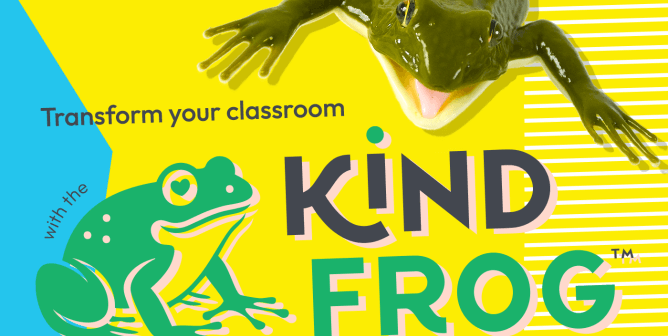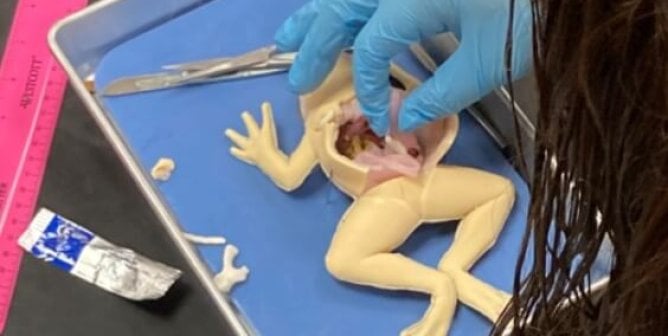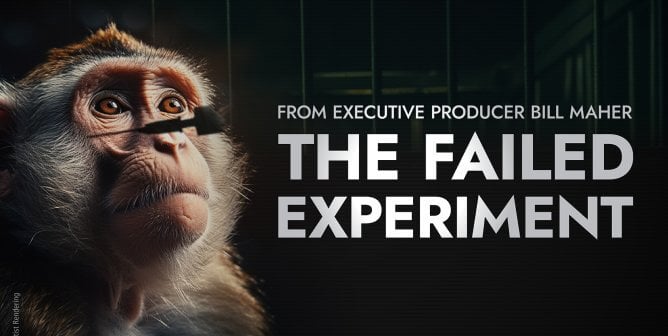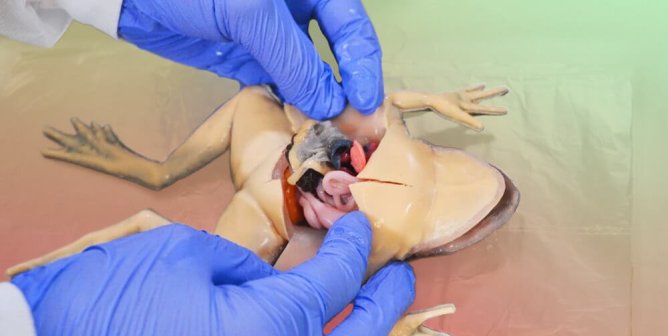Why Every Teacher Should Be Anti-Vivisection—Starting With Dissection
Teachers, let’s talk about the very honorable and important responsibility on your shoulders: YOU are currently educating the next generation of researchers, scientists, doctors, innovators, engineers, pioneers, and world leaders. No pressure, though, right? As educators, it’s truly our responsibility to equip young learners with the tools that they need to succeed—to inspire in them a love of learning, a respect for the scientific method, and a strong set of ethics to guide them on their chosen career paths.
It makes sense, then, that teachers should abandon archaic, ineffective, and deeply unethical teaching methods in favor of modern, humane, and effective ones that will better equip students for the future. Most people are aware that experimenting on animals, or vivisection, is a controversial issue—but advances in technology have shown that animal testing is simply bad science. It’s cruel, yes—there’s no arguing that, given the irrefutable evidence that we continue to gather regarding animal sentience. But it’s also wasteful, unreliable, and ineffective. Anyone who values the scientific method, embraces modern and effective research techniques, and promotes empathy toward living beings should actively oppose vivisection—and that means in the classroom, too.

Consider these facts:
Vivisection Is Ineffective
• More than 90 percent of basic science discoveries from experiments on animals fail to lead to human treatments. A 2014 review published in the British Medical Journal found that “even the most promising findings from animal-based research often fail in human trials and are rarely adopted into clinical practice. For example, one study found that fewer than 10 percent of highly promising basic science discoveries enter routine clinical use within 20 years.” Bottom line: Most experiments on animals are useless.
• Up to 89 percent of animal studies could not be reproduced. This is a massive problem, as reproducibility is regarded as a fundamental step used to confirm the validity of scientific results. A 2015 analysis concluded that, using the most conservative estimate, this equates to $28 billion per year wasted on experimentation that’s misleading.
• The National Institutes of Health (NIH) admits that 95 percent of all drugs that are shown to be safe and effective in tests on animals fail in human trials because they don’t work or are dangerous. As NIH’s website states, “The average length of time from target discovery to approval of a new drug is about 14 years. The failure rate during this process exceeds 95 percent, and the cost per successful drug can be $1 billion or more.” Not only do medications that work on animals fail in humans, there are also likely many drugs that would help humans but are discarded because they fail in tests on animals.
• Classroom dissection is known to dissuade some students—especially females—from entering science-related fields, and it has been shown to foster callousness toward animals in students. More and more young people are opposed to animal experimentation and exploiting animals for “education,” so it’s time that all schools adopt more modern and effective teaching methods.
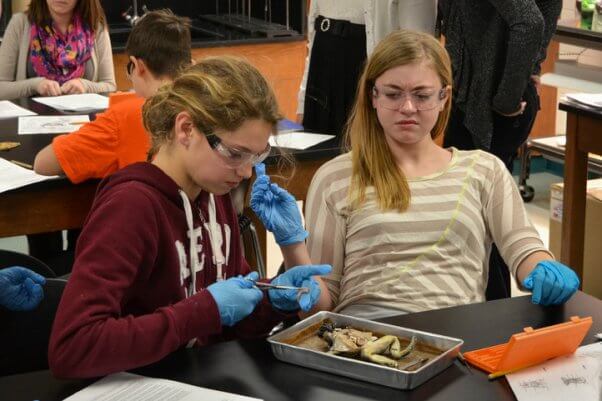
Vivisection Is Wasteful
• Experiments on animals divert time and funding away from better methods. While there are several reasons why experimentation using animals can’t reliably predict human outcomes, the most significant issue is the vast physiological differences between species. These experiments siphon economic and intellectual resources from research that’s actually relevant to human disease and could lead to cures and treatments. All the time and money spent on pointless animal tests could be put toward humane and effective testing methods.
• Most experiments on animals aren’t even relevant to human health and don’t contribute to medical advances. Many are undertaken simply from curiosity and don’t pretend to hold out the promise of curing illnesses. These wasteful and cruel “curiosity-driven” studies on animals are currently being conducted all over the country, and most are simply slight variations on experiments that have been conducted for years. Often, the “results” that they yield have already been known for years.
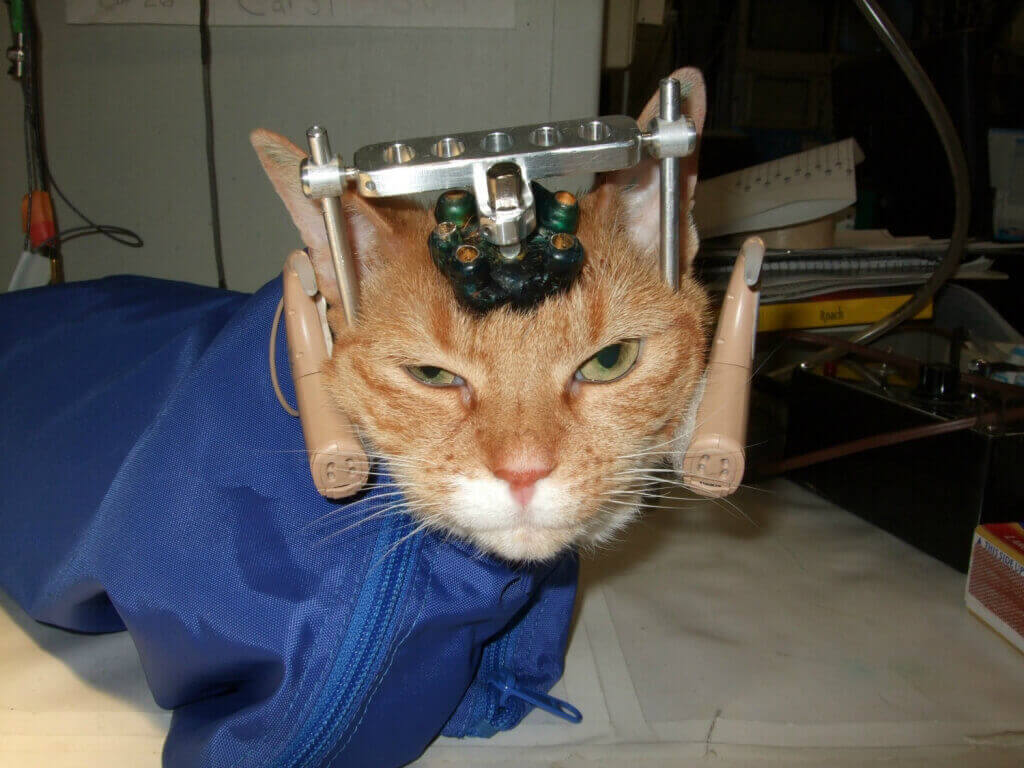
• Animal experimentation gobbles up billions of dollars annually in the U.S. (including 40 percent of all research funding from the NIH). While funding for animal experimentation and the number of animals used in experiments continues to increase, there’s still no cure for many diseases, including Alzheimer’s, muscular dystrophy, multiple sclerosis, AIDS, many types of cancer, and more.
• Similarly, classroom dissections waste schools’ much-needed funds. Using non-animal methods benefits teachers and schools by substantially lowering the cost and reducing the time associated with anatomy laboratories. How? Materials need be purchased only once but can be used indefinitely, and there’s none of the set-up and clean-up time associated with using animal specimens (which, by the way, contain carcinogenic chemicals, such as formaldehyde).
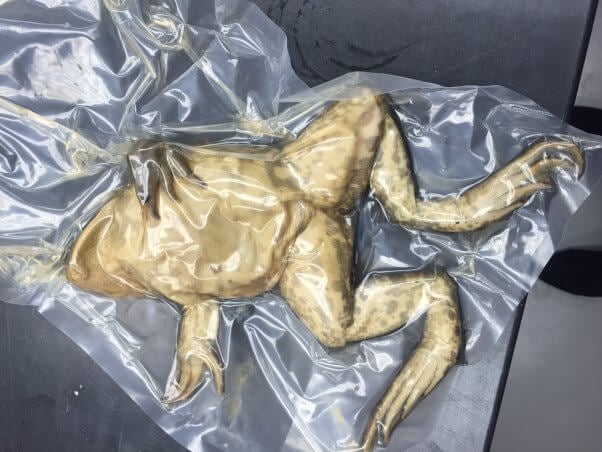
Vivisection Is Cruel
• Few laws exist to protect animals in laboratories. The only federal law that governs the use of animals in laboratories—the Animal Welfare Act—specifically excludes rats, mice, birds, farmed animals, reptiles, and amphibians. So more than 95 percent of the animals used in laboratories aren’t even covered by the minimal protection provided by that law—meaning that experimenters don’t even have to provide them with pain relief. However, even those animals the law covers are still permitted to be burned, shocked, poisoned, isolated, starved, forcibly restrained, addicted to drugs, and brain-damaged. No experiment, no matter how painful or redundant, is against the law—and painkillers are NOT required if experimenters can justify withholding them. Even when alternatives to the use of animals are available, U.S. law doesn’t require that they be used—and often they aren’t.
• Each year, more than 100 million animals are killed in U.S. laboratories for biology lessons, medical training, curiosity-driven experimentation, and chemical, drug, food, and product testing. This includes mice, rats, frogs, dogs, cats, rabbits, hamsters, guinea pigs, monkeys, fish, pigs, cows, horses, birds, and many other animals. Before their deaths, some are forced to inhale toxic fumes and others are immobilized in restraint devices for hours. Some experimenters drill holes into animals’ skulls, and others burn off their skin or crush their spinal cords—these are just a few examples of the outrageously cruel and gruesome tests that animals are forced to endure.
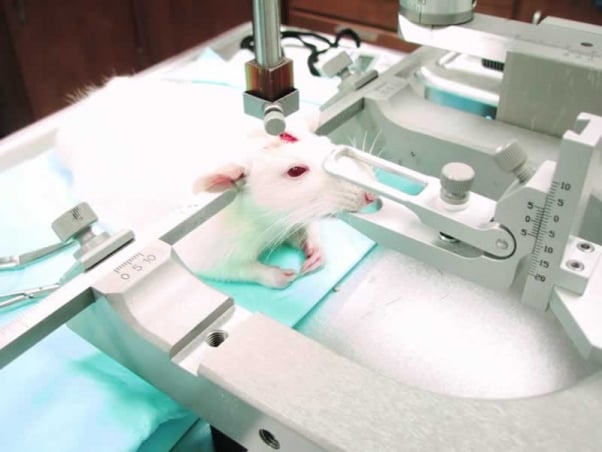
• In addition to the torment of the actual experiments, animals in laboratories are deprived of everything that’s natural and important to them. They languish in pain in barren enclosures, suffer from extreme frustration, ache with loneliness, and long to be free. Instead, all they can do is sit and wait in fear of the next terrifying and painful procedure that will be performed on them. And after enduring a life of pain, loneliness, and terror, they’re killed.
• The animals may be dead when they’re used in classroom dissections—but you can be certain that they suffered before they were killed. Each year, an estimated 10 million animals—including frogs, rats, cats, and fetal pigs—are used in cruel, archaic classroom dissections. Many of these animals are bred in filthy, crowded warehouses, while others are taken from their homes in the wild, disrupting local ecosystems. These living, feeling animals are then gassed to death, drowned, or injected with formaldehyde or other chemicals before being packaged and shipped out to schools for use in science classes.
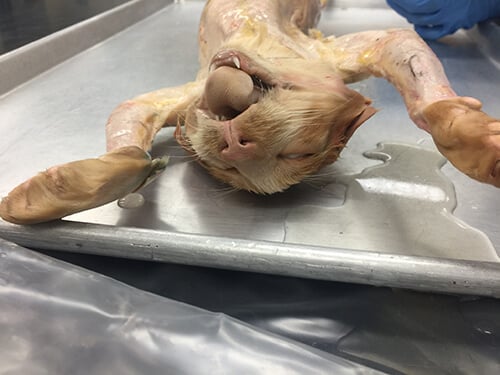
Vivisection Is Unnecessary
• Medical advances are taking place, and safe products are being produced without animal tests. Many of the most important advances in health are attributable to human studies, including the discovery of the relationships between cholesterol and heart disease and between smoking and cancer, the development of X-rays, and the isolation of the AIDS virus. The same goes for cruel product testing: Cosmetics testing on animals is now completely banned in the European Union, India, Israel, New Zealand, Norway, Switzerland, and Turkey, and it rarely occurs in Canada and the U.S. And even if a product harms animals, it can still be marketed to consumers, so there’s absolutely no point in continuing cruel tests on animals.
• Non-animal methods are widely available. Reliable, economical non-animal methods are readily availablefor a wide variety of testing applications, including antibody production, skin irritation and sensitization, eye irritation, endocrine disruption, and tobacco product development and testing. Not only are these non-animal tests more humane, they also have the potential to be cheaper, faster, and more relevant to humans. Basic science and disease research can be done with cutting-edge organ-on-chip technology, sophisticated computer simulations, 3-D cultures of human cells, epidemiological studies, and other more modern methods that are actually relevant to human health.
• Your aspiring doctors can become board-certified surgeons without harming any animals, as not a single medical school in the U.S. uses animals to train medical students. Experience with animal dissection or experimentation on live animals isn’t required or expected of those applying to or graduating from medical school. Medical students are trained using a combination of sophisticated human-patient simulators, interactive computer programs, safe human-based teaching methods, and clinical experience. Some medical professional organizations, such as The American Board of Anesthesiology, even require physicians to complete simulation training—not animal laboratories—to become board-certified.
• Studies have repeatedly shown that students who use humane alternatives to dissection perform better on tests than those who dissect animals. More and more states, districts, and schools are implementing dissection-choice policies, and teachers and students alike are opting for the many available humane alternatives

Teachers, here’s what YOU can do to stop vivisection across the board:
- End dissection in your school today. Your school can save money, benefit students, and help save animals’ lives by choosing to ditch dissection in favor of a humane, non-animal alternative. Need help choosing the right program? Contact us.
- Contact legislators, and make your voice heard. Because the government funds more experiments on animals than any other institution, urge your members of Congress to earmark research funds for progressive and relevant non-animal studies instead of useless experiments that harm and kill animals.
- Always buy cruelty-free products, and teach students to do the same. It’s as easy as looking for the cruelty-free bunny logo on all the household and cosmetics products that you purchase. Use TeachKind’s lesson plans to teach students what to do—this one is designed for primary students, and this one is for secondary students.

